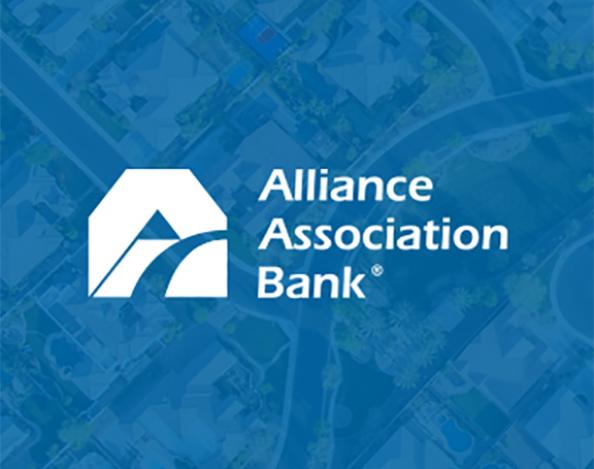Community Management Cybersecurity Tips: Steps to Fight Payment Fraud
Learn why payments fraud is on the rise—and what steps you can take to help protect your organization against this type of cyber crime.
Payments fraud is a growing concern that virtually no organization is immune to, and it’s occurring with increased frequency. In fact, payment fraud reached a new high in 2018, with 82% of organizations reporting fraud incidents, according to this year’s Association for Financial Professionals (AFP) Payments Fraud & Control Survey. Moreover, in the past five years, fraud activity has increased dramatically, with a record-setting high of 20% in 2018.
“Every type of organization is at risk of payments fraud, and it can take weeks or even months for them to realize they were targeted if the proper controls are not in place,” says Mike Moder, Western Alliance Bank Security and Fraud Management Director. “We see companies facing financial and non-financial impacts, from significant cost damage and clean-up efforts to exposure of confidential information and damage to their reputation.”
And once your company experiences fraud, you’re a target for future attacks including other methods. We’ll explore why payments fraud is on the rise—and the steps your HOA or management company can take to prevent it from happening.
Which organizations are most likely to be targets of payments fraud?
Both small and large organizations are at risk of payments fraud. And the risk extends across all departments—it’s not the finance team. The FBI recently reported that HR departments are becoming a prime target for cybercriminals, who try to change account numbers and attack direct deposits paid through ACH credits.
Why is payments fraud increasing?
Despite increased focus and millions spent on prevention via law enforcement, training and tech solutions, payments fraud is still on the rise for two primary reasons: Ongoing technology advancements have enabled cybercriminals to become more sophisticated and find new ways to target their victims. And with an increase in online transactions, fraudsters have more opportunities to attack an organization than ever.
Which payment methods are targeted most frequently?
Checks and wire transfers are the methods most frequently targeted for fraud. But those fraudulent activities are on the client, while there is a noticeable increase in fraudulent ACH debits and credits. ACH transactions are typically safer and more difficult to compromise, but this increase suggests that cybercriminals are evolving with the tactics they employ. In these cases, it’s usually not the payment method itself that’s being compromised but the processes leading up to payment initiation—and ACH fraud activity is frequently connected to phishing scams and business email compromise (BEC).
What steps can you take to help protect your organization?
While there’s no single solution to fit all cybersecurity issues, there are internal controls to help protect your organization, including:
- Documenting critical banking processes and approval steps for your company and not deviating from them.
- Inspecting financial statements immediately against your internal records.
- Segregating financial duties to prevent internal fraud.
- Taking inventory of check supply regularly, and restricting employee access.
- Paying vendors by ACH credits rather than allowing ACH debits to your account.
- Verifying new supplier entries to help protect accounts payable.
- Using a single, dedicated computer for critical online banking function to avoid corruption introduced through emails or other unsecure sources. (This is a critical strategy to avoid BECs, which are a massive threat to businesses.)
- Maintaining constant vigilance: The longer it takes to identify fraudulent activity, the lower the chances of recovery.
Still, cybercriminals are constantly getting smarter with their tactics and developing new strategies for gaining access to sensitive data. To combat this, a robust cybersecurity policy must go beyond simply identifying your company’s exposure to risks posed by hackers, scammers, malware and ransomware.
What solutions does Alliance Association Bank offer to help safeguard your account?
Helping to protect your account is a top priority. We utilize authentication for login and transactions approval and entitlements that control what features a user can access, the accounts they can access and the payment limits which may be used. In addition, we have various fraud protection solutions specifically tailored to the community management industry. And be sure to download our fraud prevention checklist for a comprehensive list of strategies for keeping your organization safe.
Alliance Association Bank
Alliance Association Bank, a division of Western Alliance Bank, Member FDIC, delivers a tailored suite of deposit, financing and technology solutions designed for community management companies and homeowner associations nationwide. The bank’s relationship officers provide a broad spectrum of innovative and customized solutions to help community associations succeed, all with a high level of expertise and responsiveness. Alliance Association Bank is part of Western Alliance Bancorporation, which has more than $85 billion in assets. Major accolades include being ranked as a top U.S. bank in 2024 by American Banker and Bank Director. With significant national capabilities, Alliance Association Bank delivers the reach, resources and deep industry knowledge that make a difference for customers.
